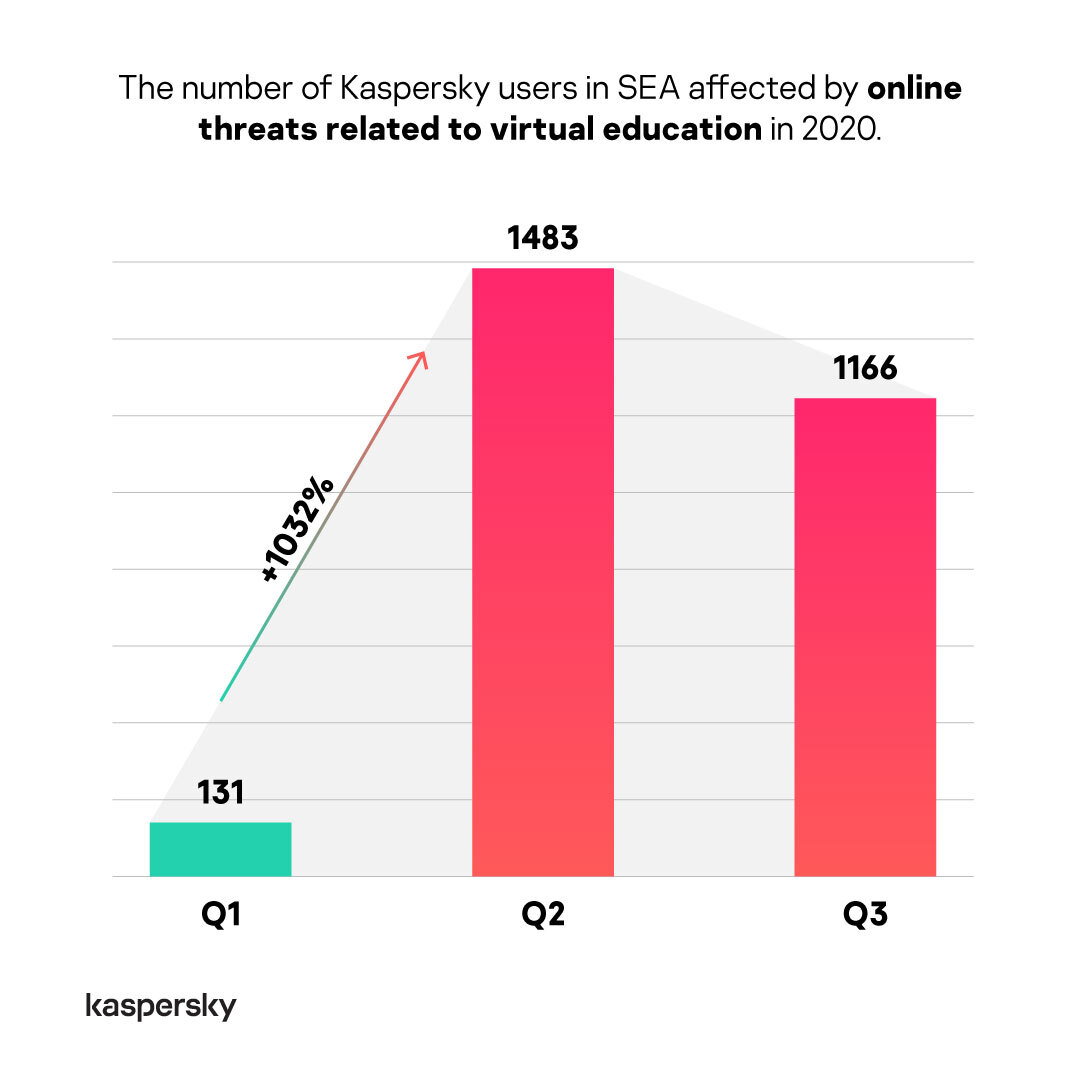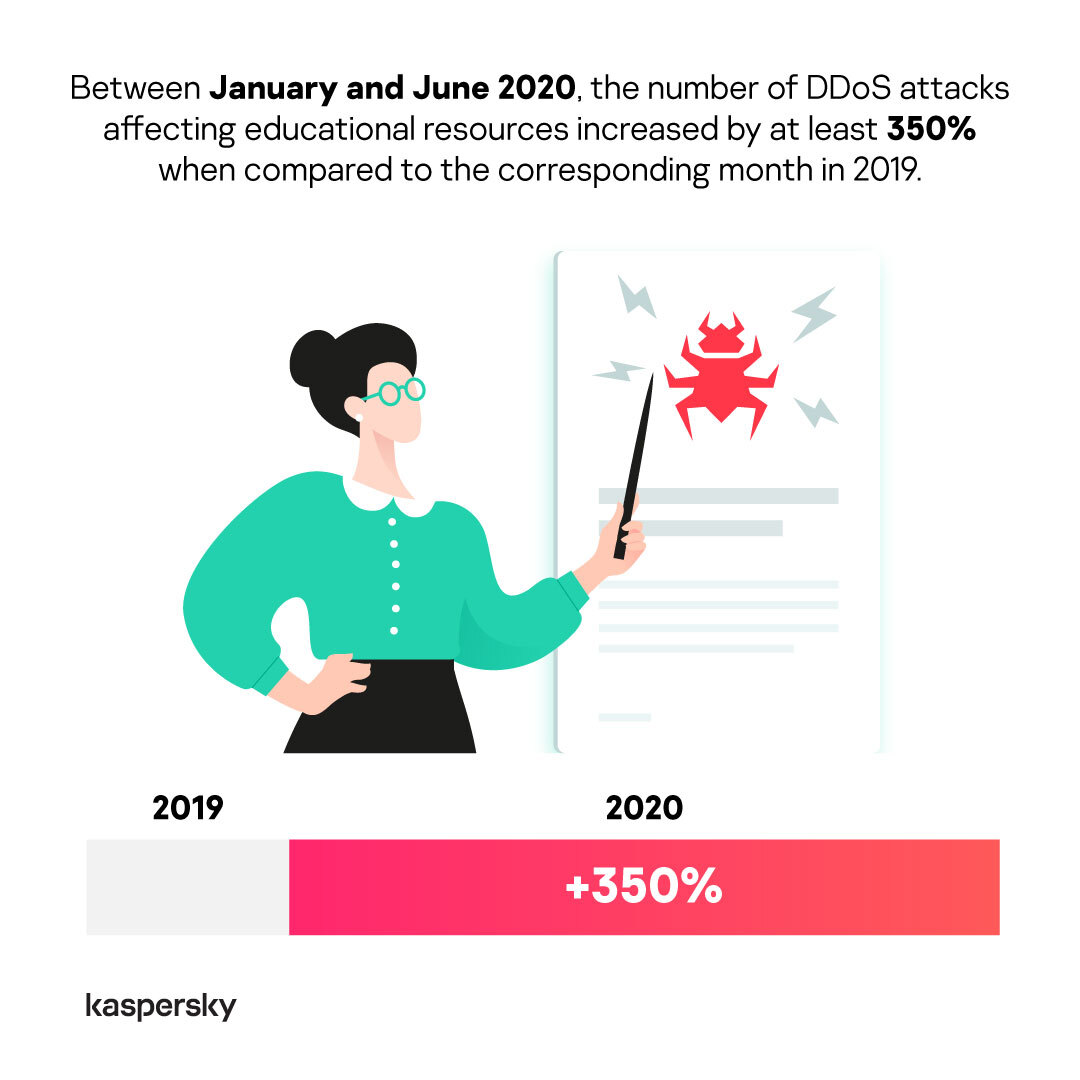Educational institutions across Southeast Asia (SEA) have experienced tremendous disruption due to the COVID-19 pandemic. Almost overnight, Educators were forced to move offline schooling to remote or hybrid learning environments with little to no preparation. A new report from the Kaspersky Security Network (KSN) highlighted a steep surge in the number of users in SEA that have encountered threats disguised as e-learning and video conferencing platforms during the first three quarters of 2020.
Kaspersky said it found threats masquerading as some popular e-learning platforms including Zoom, Google Classroom, Google Meet, Moodle, Blackboard, Coursera and edX.

The report said from just 131 affected users during January to March 2020, the number of online threats related to virtual education and online videoconferencing applications jumped up to 1,483 users in the second quarter of 2020. This represents a staggering 1,032% increase in a per quarter comparison.
The global cybersecurity company also monitored a slight decrease to 1,166 users affected by the threats in the third quarter of 2020.
Kaspersky general manager for Southeast Asia Yeo Siang Tiong said:
The four-digit rise in the number of users we have secured from various threats online prove that cybercriminals are well aware of new loopholes that they are using to exploit victims in the already stressed educational sector.
He added that educators are increasingly overwhelmed and anxious, so they are more vulnerable to falling prey to old but effective social engineering tricks such as phishing and scams.

Meanwhile, Kaspersky noted that the total number of denial of service (DoS) attacks globally, particularly on educational resources, has increased by 80% in Q1 2020 alone compared to the same period the previous year. Back in May, Kaspersky released a report that revealed Distributed Denial of Service (DDoS) attacks on education and council sites tripled during the pandemic.
For those not in the know, DoS attacks are used by cybercriminals to overwhelm a network server with many requests in the hopes of crashing that server- thereby denying user access. These attacks are problematic as they can last anywhere between days to a few weeks. This causes tremendous disruptions to educational institutions as it denies students and staff access to critical materials.
Kaspersky said it is lending educational institutions a helping hand by offering solutions and cybersecurity training, empowering teachers and school administrators to build on their technical and behavioural defences against cybercriminals.
“We believe that with the right security tools in place and the proper mindset, educational institutions can focus better on what they do best, educating their students,” said Yeo.
To find out more about Kaspersky latest report on the risks against the education sector here.
Tips for educators

Kaspersky has several suggestions on how educators can improve their security online:
1. Learn about the tools you are using – Know their capabilities and features as well as you can, by reading through the instructions, learning the interface, and searching on the Internet for configuration guides. Ensure that you follow the rules set by your institution as well.
2. Limit your tools – The IT tools you select to conduct classes should be convenient for both teacher and students. More tools does not necessarily mean a better experience. Before starting classes, make sure you have sufficient tools for the job and that all participants in the educational process are comfortable using them.
3. Set a unique password for each service –For every account, you need one unique password. Of course, all of your passwords should be strong — long enough and not too obvious.
4. Guard your educational accounts -Pay careful attention to the accounts you use for educational purposes. You should have no problems accessing them at any moment, and no one else should be able to log in to them.
5. Understand how to recognize phishing e-mails – It is important to know how to distinguish phishing attempts from official mailings and the messages legitimate services might send. Phishing sites often contain errors, misaligned layouts, and broken links, but sometimes scammers manage to create phishing pages that are indistinguishable from the real thing.
6. Protect devices – You need reliable protection on every device you use to access educational resources. If a student’s school computer is crawled by ransomware, for example, restoring the computer and files can waste a lot of valuable time.
A solution for educational institutions

Kaspersky understands that schools and colleges may have a limited budget and workforce for IT security, hence they have introduced a new tool called Kaspersky EDR Optimum.
It is an automated solution that does not require teachers or staff to have a high level of expertise to use. According to Kaspersky, the tool requires less attention and routine maintenance, so educators can focus on teaching. At the same time, the tool also gives educators greater visibility over the school’s IT infrastructure as well as assist them in investigating incidents and respond to threats.
Currently, Kaspersky is offering discounts for educational institutions in SEA for Kaspersky EDR Optimum on 10-999 nodes until December 2020.
- 1 year Base, Crossgrade: 30% Discount
- 3 year Base, Crossgrade: 50% Discount
- Add-On option for 1 & 3 year: 50% Discount
Schools and colleges can find out more about the promo by visiting Kaspsersky’s website.








